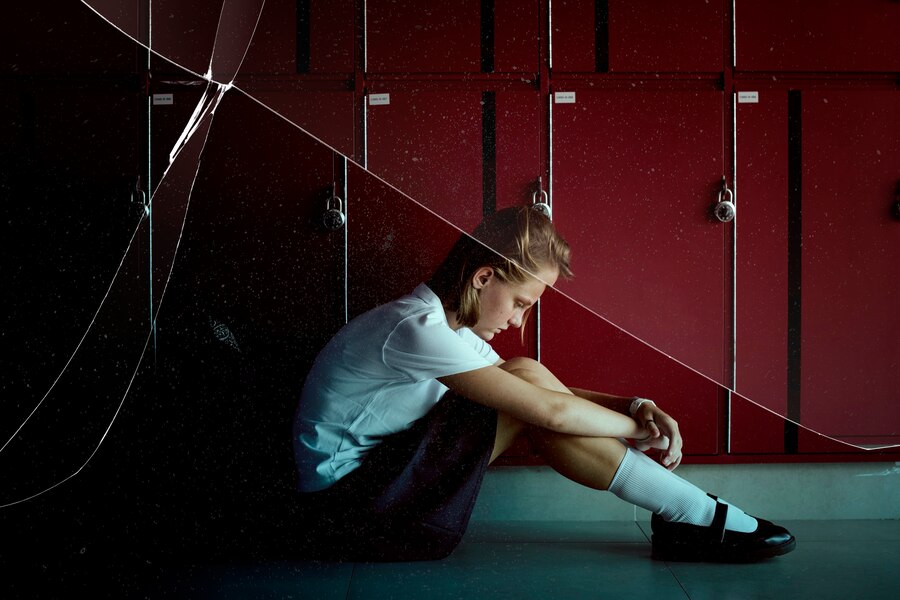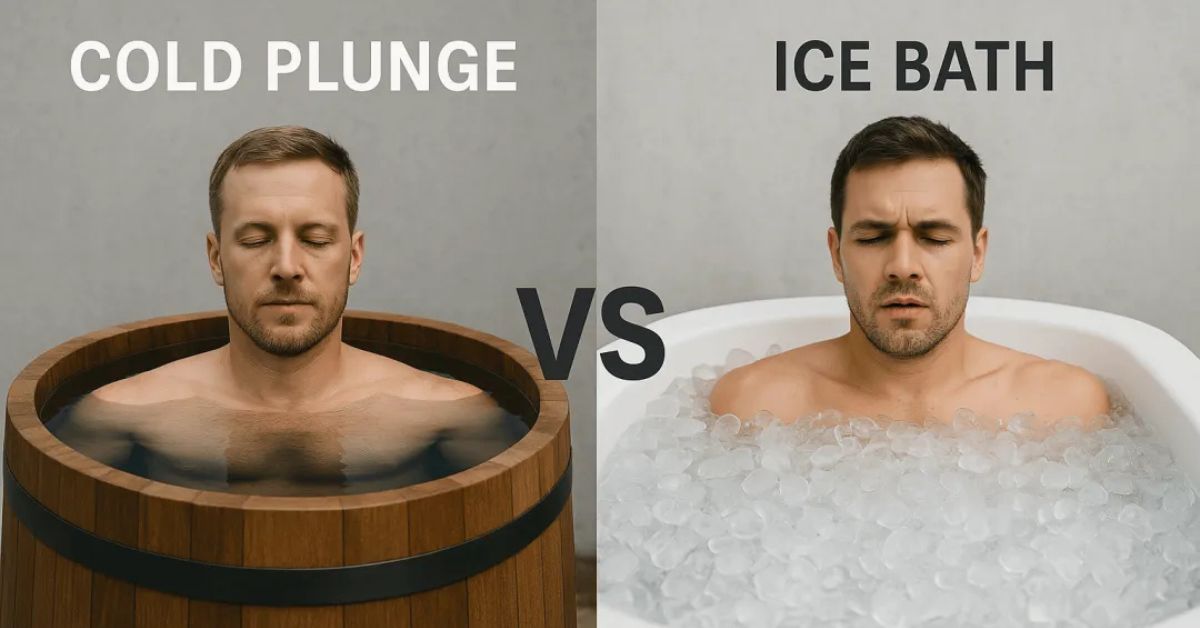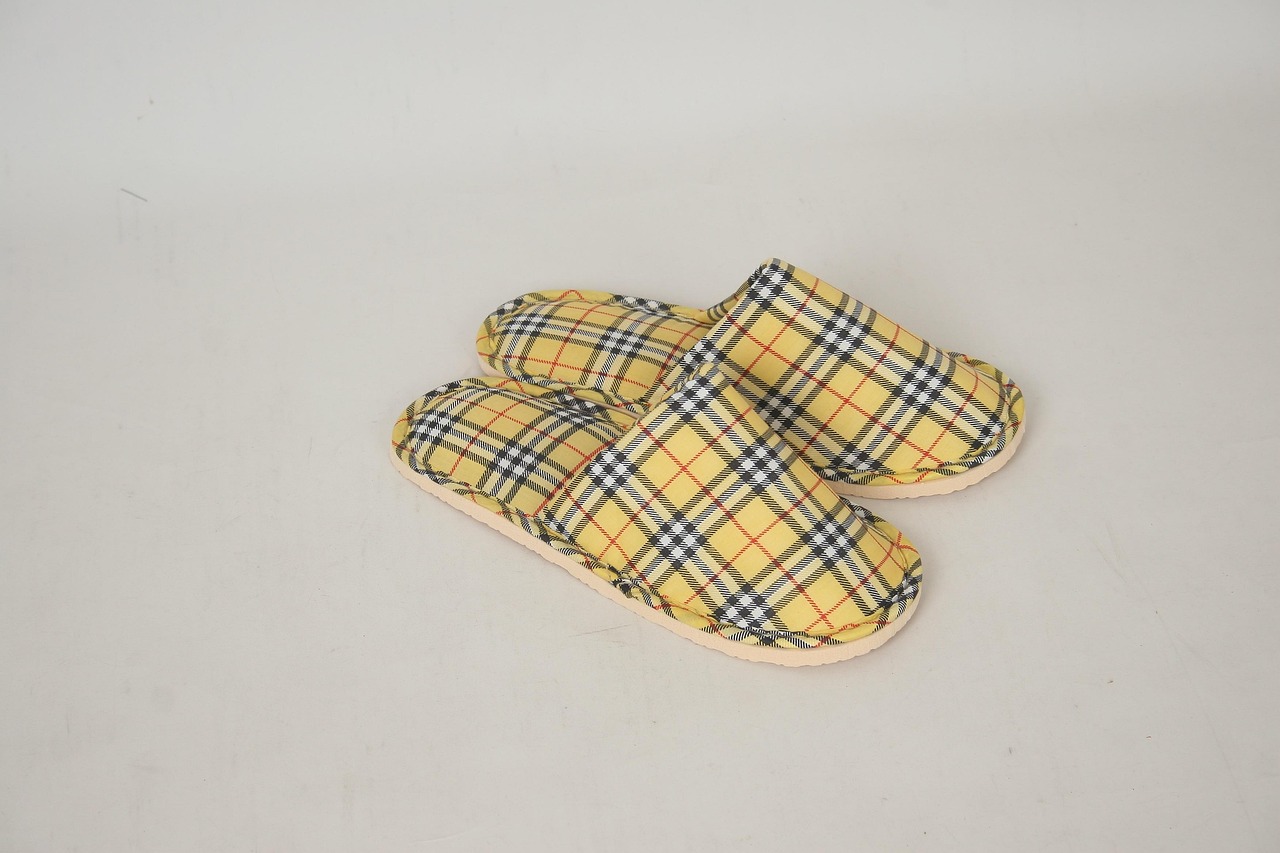Fitness
Conquering Setbacks The Athlete’s Nightmare of Injury and Fear

This blog post explores the hidden fear of injury that athletes face, despite their portrayals as invincible. It delves into the psychological and emotional challenges that come with injuries and offers strategies for overcoming fear and regaining confidence. Ideal for athletes, coaches, and sports enthusiasts, it provides inspiration for navigating the recovery journey.
The Mental Battle Unpacking the Fear
When an athlete faces an injury, the mental battle that accompanies it can be just as challenging as the physical recovery. The fear of not returning to peak performance, losing a spot on the team, or enduring the pain again can create a whirlwind of anxiety and self-doubt. This fear is rooted in the uncertainty of the future and the pressure to meet expectations. Athletes often grapple with feelings of vulnerability, questioning their identity and purpose beyond their sport.
The psychological impact of injury can lead to isolation and frustration. Athletes may find themselves distanced from their teammates, unable to participate in practices and competitions. This sense of separation can exacerbate feelings of inadequacy, intensifying the mental struggle. Understanding that these emotions are valid and common is the first step toward overcoming them. Acknowledging the fear is crucial, as it opens the door to addressing it constructively.
Overcoming the Obstacles Strategies for a Positive Mindset
Maintaining a positive mindset during recovery is no easy feat, but it’s essential for successful rehabilitation. One effective strategy is setting small, achievable goals. Progress may be slow, but each milestone reached is a testament to resilience. Celebrating these victories, no matter how minor fosters a sense of accomplishment and motivates athletes to keep moving forward.
Visualization is another powerful tool. Athletes can harness the power of their imagination to picture themselves overcoming challenges, performing at their best, and achieving their goals. Visualization not only boosts confidence but also reinforces the mind’s connection to the body, aiding healing.
Surrounding oneself with positive influences is equally vital. Connecting with fellow athletes who have faced similar setbacks creates a support network that understands the unique challenges of injury. Sharing experiences and offering encouragement can uplift spirits and remind athletes that they are not alone on this journey.
The Importance of Professional Support Coaches and Therapists
Professional support plays a crucial role in an athlete’s recovery process. Coaches, physical therapists, and sports psychologists provide guidance, expertise, and moral support that are indispensable during rehabilitation. These professionals work together to create personalized recovery plans that address both physical and mental aspects.
Coaches offer tailored training programs that focus on regaining strength, flexibility, and skill. Their encouragement and belief in an athlete’s potential can reignite motivation and drive. Physical therapists play a pivotal role in designing exercises that promote healing while preventing further injury, especially in sports injury treatment like those available in Lehi. Their expertise ensures that athletes are progressing safely and effectively.
Sports psychologists address the psychological barriers that can hinder recovery. They provide strategies for managing stress, enhancing focus, and building mental resilience. By helping athletes reframe their thoughts and cultivate a growth mindset, sports psychologists empower them to overcome fear and anxiety.
Returning to the Game Tips for a Safe Comeback
Returning to the game after an injury requires careful planning and patience. Rushing back too soon can jeopardize recovery and increase the risk of re-injury. Gradual progression is key, allowing the body to adapt and rebuild strength over time. Athletes should listen to their bodies and communicate openly with their support team about any discomfort or concerns.
Setting realistic expectations is essential. Athletes may not immediately regain their previous level of performance, and that’s okay. Acknowledging that setbacks are a natural part of the process and focusing on consistent progress rather than perfection can alleviate frustration.
Developing a comprehensive warm-up and cool-down routine is crucial for preventing future injuries. Incorporating stretching, strengthening exercises, and mobility work reduces the risk of strain and prepares the body for the demands of the sport. Additionally, practicing mindfulness techniques, such as deep breathing and meditation, can help athletes stay present and manage stress effectively.
Conclusion
Now that we’ve explored the psychological impact of injury, strategies for maintaining a positive mindset, and tips for a safe return to the game, it’s clear that mental fortitude is just as crucial as physical strength during recovery. By acknowledging and addressing their emotions, athletes can overcome fear and doubt, setting themselves up for success.
Fitness
Cold Shower vs. Cold Plunge: Which One Is Right for You?

Ever wondered which cold therapy method packs a bigger punch—cold showers or cold plunges?
Athletes, biohackers, and wellness enthusiasts swear by cold exposure for its benefits, from boosted recovery to mental resilience. But which method delivers better results? And how do you choose the right one for your lifestyle?
In this deep dive, we’ll compare Cold Shower vs. Cold Plunge head-to-head, examining the science, benefits, and practical considerations. By the end, you’ll know exactly which icy ritual belongs in your routine.
Cold Showers vs. Cold Plunges: Key Differences
Before we weigh the pros and cons, let’s define each method:
-
Cold Shower: Standing under cold (50–60°F) water for 1–5 minutes.
-
Cold Plunge: Submerging your body (usually up to the neck) in icy water (40–55°F) for 1–10 minutes.
While both expose you to cold, the intensity and immersion level differ significantly.
The Science Behind Cold Exposure
Cold therapy triggers vasoconstriction (narrowing of blood vessels), reducing inflammation and flushing metabolic waste. It also spikes norepinephrine, a hormone linked to focus and mood.
Studies show cold exposure can:
✅ Reduce muscle soreness (1)
✅ Improve circulation (2)
✅ Boost mental resilience (3)
✅ Enhance immune response (4)
But does a cold shower deliver the same benefits as a full-body plunge?
Cold Showers: The Beginner-Friendly Option
Pros:
✔ Accessible – No special equipment needed.
✔ Gentler – Easier to tolerate for beginners.
✔ Convenient – Fits into daily showers.
Cons:
❌ Less intense – Limited full-body immersion.
❌ Shorter duration – Harder to stay in for long periods.
Best For:
-
Newcomers to cold therapy
-
People seeking a quick energy boost
-
Those with limited space or budget
Expert Tip: Start with 30 seconds of cold at the end of your shower and gradually increase.
Cold Plunges: The Ultimate Cold Therapy
Pros:
✔ Full-body immersion – More effective for recovery (5).
✔ Deeper cold exposure – Stronger metabolic and hormonal response.
✔ Customizable – Adjust temperature and duration.
Cons:
❌ Expensive – Requires a plunge tub or natural cold water source.
❌ Harder to tolerate – Not ideal for beginners.
Best For:
-
Athletes and serious recovery seekers
-
People with chronic inflammation
-
Those committed to long-term cold therapy
Expert Tip: Aim for 3–5 minutes at 50–55°F before progressing to colder temps.
Which One Wins?
| Factor | Cold Shower | Cold Plunge |
|---|---|---|
| Ease of Use | High | Moderate |
| Cost | Free | $100–$5,000+ |
| Effectiveness | Moderate | High |
| Recovery | Good | Excellent |
Verdict:
-
Choose cold showers if you want a simple, daily habit.
-
Opt for cold plunges if you’re serious about recovery and performance.
How to Get Started Safely
For Cold Showers:
-
Finish your normal shower with 30 seconds of cold.
-
Gradually increase to 2–5 minutes.
-
Breathe deeply to manage the shock.
For Cold Plunges:
-
Start with 50–55°F water for 1–2 minutes.
-
Use a timer to avoid overexposure.
-
Warm up naturally afterward (no hot showers immediately).
Warning: Avoid cold exposure if you have heart conditions or Raynaud’s disease.
Final Thoughts: Cold Shower vs. Cold Plunge
Both cold showers and cold plunges offer unique benefits. If you’re testing the waters (literally), start with showers. If you’re chasing peak performance, a cold plunge may be worth the investment.
The best choice? The one you’ll stick with consistently.
Now, over to you—will you brave the cold shower or take the full plunge?
Fitness
Plantar Fasciitis Slippers: Do They Really Help?

Do your feet ache the moment you step out of bed? If you suffer from plantar fasciitis, that sharp heel pain can make mornings miserable. But what if the right pair of slippers could ease your discomfort?
Plantar fasciitis slippers are designed to provide arch support, cushioning, and stability—key elements in relieving foot pain. But do they work? And how do you choose the best pair?
In this guide, we’ll break down:
✔ What makes plantar fasciitis slippers different
✔ Science-backed benefits (do they really help?)
✔ Top features to look for
✔ 5 best slippers for plantar fasciitis in 2024
✔ Expert tips for maximum relief
Let’s dive in.
What Are Plantar Fasciitis Slippers?
Unlike regular slippers, plantar fasciitis slippers are specially designed to:
-
Support the arch (reducing strain on the plantar fascia)
-
Cushion the heel (absorbing shock with every step)
-
Promote proper alignment (preventing overpronation)
Dr. Emily Splichal, a podiatrist and human movement specialist, explains:
“Plantar fasciitis slippers should mimic the support of orthopedic shoes. A contoured footbed and firm heel counter are essential to offload tension on the fascia.”
Who Needs Them?
-
People with chronic heel pain
-
Those recovering from plantar fasciitis
-
Individuals who stand or walk barefoot often
-
Postpartum women (due to relaxin hormone effects on ligaments)
Do Plantar Fasciitis Slippers Really Work?
Research says yes—with caveats.
A 2020 study in the Journal of Foot and Ankle Research found that firm arch support significantly reduces plantar fascia tension. Another study in Clinical Biomechanics showed that heel cushioning decreases impact forces by up to 20%.
But not all slippers are equal.
-
Cheap, flat slippers can worsen pain.
-
Overly soft memory foam lacks support.
-
Non-slip soles are crucial for stability.
Real-World Example:
Sarah, a nurse who spent 12-hour shifts on her feet, switched to supportive slippers at home. “Within two weeks, my morning heel pain dropped by 70%,” she reported.
5 Must-Have Features in Plantar Fasciitis Slippers
1. Firm Arch Support
-
Look for molded EVA or cork footbeds (not just soft foam).
-
Avoid flat slippers—they strain the plantar fascia.
2. Deep Heel Cup
-
Cradles the heel to reduce impact.
-
Prevents lateral instability.
3. Adjustable Straps
-
Ensures a snug fit (loose slippers cause friction).
-
Helpful for swollen feet.
4. Rigid Outsole
-
A slightly stiff sole prevents excessive flexing.
-
Rubber treads prevent slips.
5. Breathable Materials
-
Mesh or leather uppers reduce sweat.
-
Moisture-wicking liners prevent bacteria buildup.
5 Best Plantar Fasciitis Slippers of 2024
1. Oofos OOahh Slide
✅ Podiatrist-recommended
✅ Dual-density foam absorbs shock
✅ Machine washable
Best for: Recovery after workouts
2. Vionic Relax Slipper
✅ Orthotic arch support
✅ Fleece-lined for warmth
✅ APMA-approved
Best for: Cold climates
3. Crocs Classic Clog
✅ Roomy toe box
✅ Cushioned Croslite foam
✅ Easy to clean
Best for: Indoor/outdoor use
4. Hoka Ora Recovery Slide
✅ Meta-Rocker sole reduces strain
✅ Thick midsole cushioning
✅ Lightweight
Best for: Severe heel pain
5. OrthoFeet Asheville Slipper
✅ Adjustable straps
✅ Non-binding design
✅ Wide widths available
Best for: Diabetic neuropathy
Expert Tips to Maximize Relief
-
Wear them immediately after waking (when fascia is tightest).
-
Pair with stretching (calf raises, towel stretches).
-
Replace every 6–12 months (cushioning wears out).
-
Avoid going barefoot (even at home).
Dr. Markinson, NY-based podiatrist, advises:
“Think of plantar fasciitis slippers as a bridge between shoes and barefoot walking. They’re not a cure but a critical part of pain management.”
Final Verdict: Are They Worth It?
If you battle heel pain, morning stiffness, or arch fatigue, plantar fasciitis slippers can be a game-changer. The key is choosing structured support over flimsy fashion slippers.
Try this: Wear supportive slippers for 2 weeks straight (especially first thing in the morning). Track your pain levels—many users report noticeable improvement in that time.
Fitness
Rotisserie Chicken Calories & Grams: A Complete Nutrition Guide

Introduction
Picture this: You’re rushing home after a long day, and the aroma of golden-brown rotisserie chicken fills the air. It’s juicy, convenient, and seemingly healthy—but how many calories are you actually consuming? And what about protein, fat, and serving sizes?
Rotisserie chicken is a go-to meal for busy families, fitness enthusiasts, and health-conscious eaters. But not all chickens are created equal. Depending on seasoning, cooking methods, and portion size, the nutritional value can vary.
In this guide, we’ll break down rotisserie chicken calories per gram, compare different types (plain vs. seasoned), and provide expert-backed tips for making the healthiest choice.
Rotisserie Chicken Nutrition: Calories & Macros
1. Calories in Rotisserie Chicken (Per 100g & Per Serving)
A typical rotisserie chicken (without skin) contains roughly:
-
165–170 calories per 100g (about 3.5 oz)
-
31g protein
-
3.6g fat
-
0g carbs
However, with skin, the numbers change:
-
237–250 calories per 100g
-
23g protein
-
15g fat
Why the difference? The skin adds extra fat and calories—about 50–80 more calories per 100g.
2. Breaking Down a Whole Rotisserie Chicken
An average rotisserie chicken weighs 2–3 lbs (900–1,360g) and yields:
-
Breast (skinless): 284 calories, 53g protein, 6g fat (per ½ breast)
-
Thigh (skinless): 209 calories, 26g protein, 10g fat
-
Drumstick (skinless): 172 calories, 28g protein, 6g fat
-
Wing (with skin): 126 calories, 11g protein, 8g fat
Pro Tip: Removing the skin cuts calories by 20–30%, making it a leaner protein source.
Does Brand Matter? Comparing Store-Bought Rotisserie Chickens
Not all rotisserie chickens are equal. Some stores inject brine (saltwater solution) for juiciness, increasing sodium content. Here’s a quick comparison:
| Brand/Store | Calories (per 100g, no skin) | Sodium (mg per serving) |
|---|---|---|
| Costco | 170 | 460mg |
| Walmart | 165 | 510mg |
| Whole Foods | 160 | 380mg |
Key Takeaway: If you’re watching sodium, opt for organic or low-sodium options.
Rotisserie Chicken vs. Homemade: Which Is Healthier?
Store-bought rotisserie chicken is convenient, but homemade lets you control ingredients.
Pros of Store-Bought:
✅ Ready-to-eat, time-saving
✅ Consistent flavor
✅ Often cheaper than raw whole chicken
Cons of Store-Bought:
❌ Higher sodium (from brining)
❌ Possible additives (preservatives, MSG)
❌ Skin is often oil-basted
Healthier Alternative:
-
Buy a plain rotisserie chicken, remove the skin, and season at home with herbs.
-
Make your own in an air fryer or slow cooker for lower sodium.
How to Use Rotisserie Chicken for Weight Loss & Muscle Gain
For Weight Loss:
-
Remove the skin to save ~80 calories per serving.
-
Pair with veggies (salads, stir-fries) for fiber.
-
Avoid creamy sauces (ranch, gravy) that add empty calories.
For Muscle Gain:
-
Eat the skin for extra calories (if bulking).
-
Combine with complex carbs (brown rice, quinoa).
-
Meal prep shredded chicken for high-protein lunches.
Real-World Example:
A fitness influencer eats rotisserie chicken + sweet potatoes + broccoli post-workout for a balanced 400-calorie meal.
Common Myths About Rotisserie Chicken
Myth 1: “It’s Always Healthier Than Fried Chicken.”
✅ True if skinless—but some rotisserie chickens are basted in oil, making them similar in fat to fried chicken.
Myth 2: “All Rotisserie Chickens Are High in Protein.”
✅ Mostly true, but brined chickens may have slightly less protein per gram due to water retention.
Myth 3: “Organic Rotisserie Chicken Is Always Better.”
✅ Organic = fewer additives, but check sodium levels—some are still high.
Final Verdict: Is Rotisserie Chicken Good for You?
Yes—if you choose wisely! Here’s how:
✔ Pick skinless portions to save calories.
✔ Compare sodium levels (aim for <500mg per serving).
✔ Use leftovers creatively (soups, tacos, salads).
Rotisserie Chicken Calories & Grams is a nutrient-dense, high-protein option—perfect for quick meals without sacrificing health.
Your Next Step: Smart Rotisserie Chicken Hacks
-
Shred & Freeze for easy meal prep.
-
Make Bone Broth with the carcass for extra nutrients.
-
DIY Seasoning to control salt and flavor.
Now that you know the calories, grams, and best practices, you can enjoy rotisserie chicken guilt-free!
-

 Articles3 months ago
Articles3 months agoHow Many Times Can You Regrow Green Onions
-

 News10 months ago
News10 months agoUnderstanding HotLeaks: What You Need to Know
-

 Fashion8 months ago
Fashion8 months agoOpals in the USA: A Gemstone Transforming the Crystal Healing Market
-

 Entertainment7 months ago
Entertainment7 months agoHow to Use Snaptik: A Complete Guide to Download TikTok Videos
-

 Technology1 year ago
Technology1 year agoThe Wonders of Oh Em Gee Blog
-

 Entertainment1 year ago
Entertainment1 year agoBare it All: Unforgettable Skinny Dipping Stories Shared
-

 Health1 year ago
Health1 year agoCan You Smoke Shrooms? Exploring the Myths and Realities
-

 Articles5 months ago
Articles5 months agoWHAT IS THE DIFFERENCE BETWEEN SEED GARLIC AND FOOD GARLIC?
